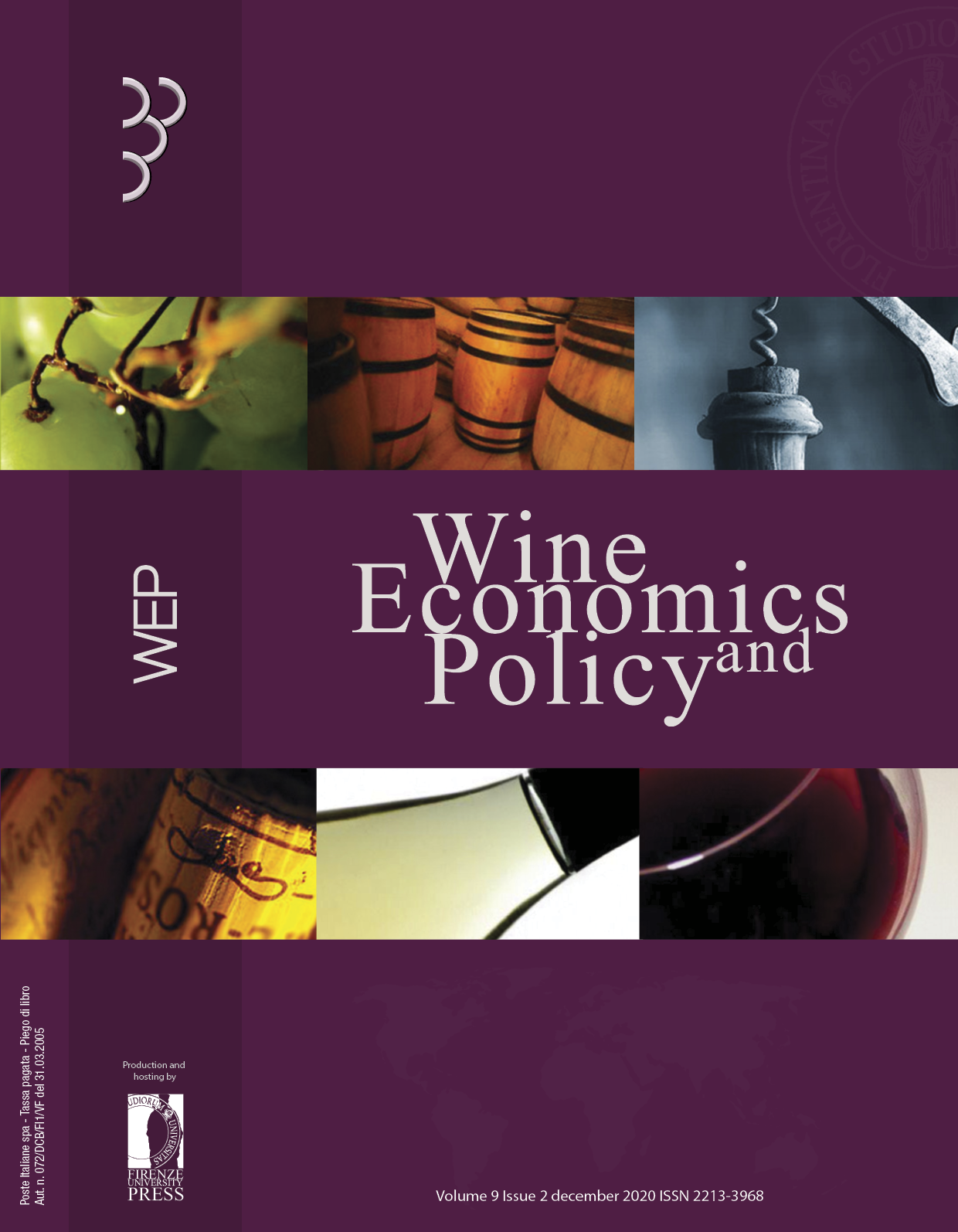Published 2020-11-23
Keywords
- climate variability,
- viticulture,
- wine,
- computable general equilibrium,
- Chile
How to Cite
Funding data
-
Conselho Nacional de Desenvolvimento Científico e Tecnológico
Grant numbers 302861/2018-1;380931/2018-4;465501/2014-1 -
Consejo Nacional de Innovación, Ciencia y Tecnología
Grant numbers 2018/08337-8 -
Fundação de Amparo à Pesquisa do Estado de São Paulo
Grant numbers 2018/08337-8;2014/50848-9 -
Coordenação de Aperfeiçoamento de Pessoal de Nível Superior
Grant numbers 16/2014
Abstract
Short-term climate conditions may affect crop yields and vintage quality and, as a consequence, wine prices and vineyards’ earnings. In this paper, we use a Computable General Equilibrium (CGE) model for Chile, which incorporates very detailed information about the value chain of the wine sector in the country. Using information for the 2015-2016 harvest, we calibrate climate variability shocks associated with a “bad year” for the wine industry in Chile, when premature rains occurred in important wine regions, reducing the area harvested and leading to wines with less concentrated flavors, particularly for reds. We model the climate shocks as a productivity change in the grape-producing sector (quantity effect). Moreover, we model quality effects as a shift in the foreign demand curve for Chilean wine. Given the specific economic environment in the model and the proposed simulation, it is possible to note the reduction of Chilean real GDP by about 0.067%. By decomposing this result, we verify that the quality effect has a slightly greater weight compared to the quantity effect.

